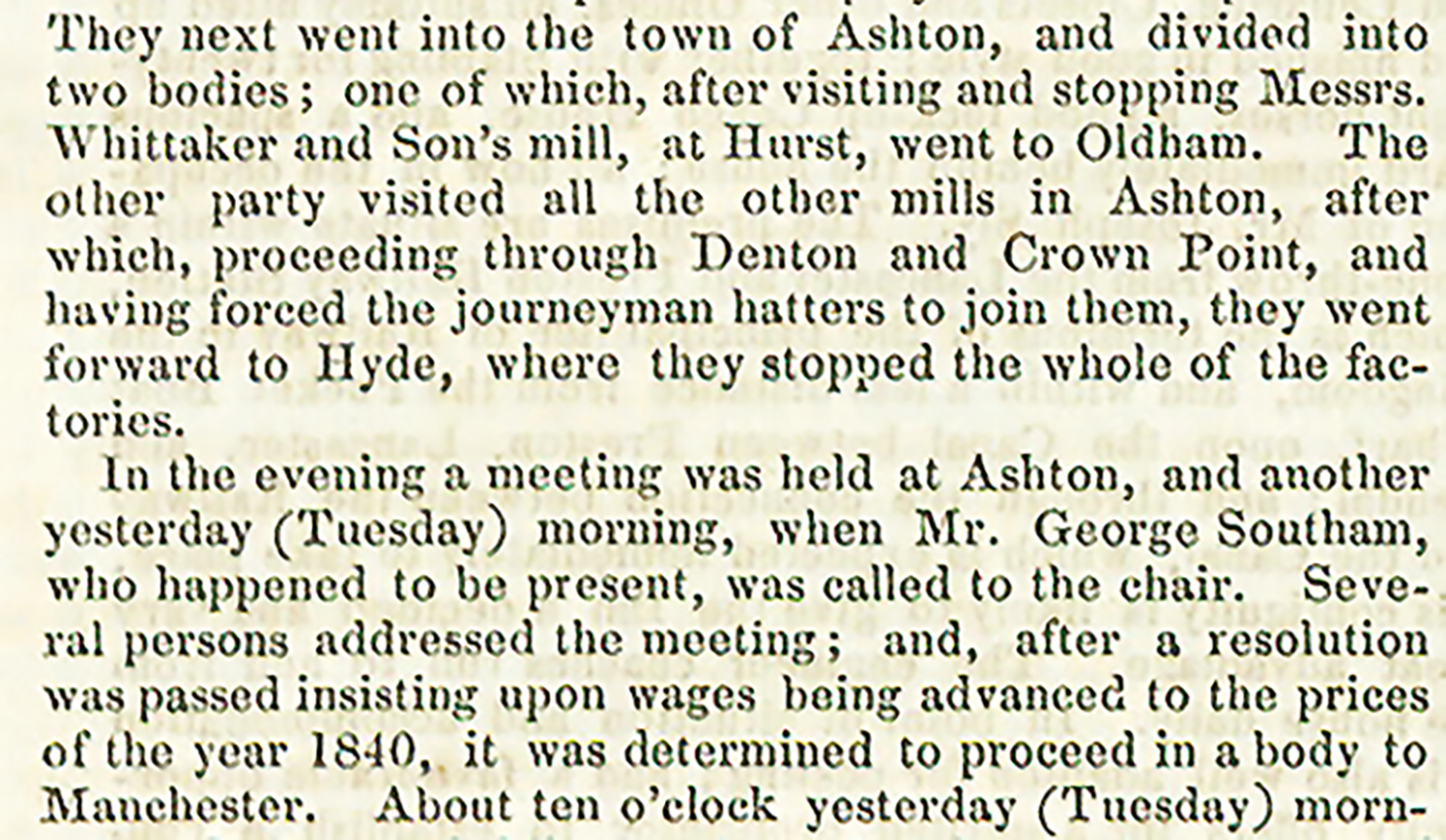
Extracts from an article about trouble in Manchester and its surroundings in ‘The Preston Chronicle and Lancashire Advertiser’, 13 August, 1842, Catalogue ref: HO 45/249A f28
Transcript
They next went into the town of Ashton, and divided into two bodies; one of which, after visiting and stopping Messrs. Whittaker and Son’s mill, at Hurst, went to Oldham. The other party visited all the other mills in Ashton, after which, proceeding through Denton and Crown Point, and having forced the journeyman [trained worker in a trade] hatters to join them, they went forward to Hyde, where they stopped the whole of the factories.
In the evening a meeting was held at Ashton, and another yesterday (Tuesday) morning, when Mr. George Southam, who happened to be present, was called to the chair. Several persons addressed the meeting; and, after a resolution was passed insisting upon wages being advanced to the prices of the year 1840, it was determined to proceed in a body to Manchester. …
A ‘turn out’ meant the turning workers out of the factories, stopping their work, and marching through the streets.
- What is another word for a ‘turn-out’?
- What information suggests that the authorities expected trouble in Manchester and the local area?
- In extracts 4b (i) and 4b (ii) which workers joined together to demonstrate?
- What was the aim of the demonstration?
- What is meant by the phrase ‘No one should work until they have their rights’ in extract 4c?
- Do you think that there were links between the demand for higher wages, poverty and the Chartist movement, or were they separate issues?
- Does this newspaper article help explain support for Chartism?
- Can you describe the tone and attitude of the newspaper article? What other sources could help you find out more about these events?
